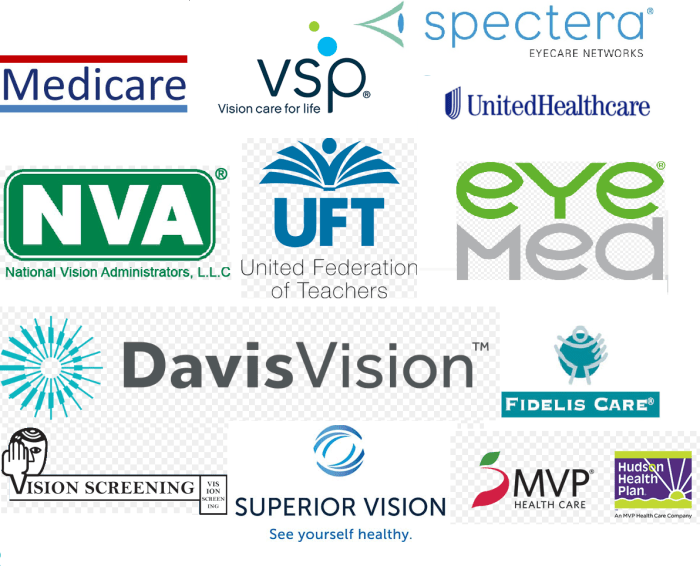
Vision insurance that covers glasses and contacts opens up a world of possibilities for maintaining eye health and enhancing your vision. It’s not just about seeing clearly; it’s about finding the perfect plan that fits your lifestyle and budget. With various options available, understanding what each plan covers can make the difference between a blurry view and crystal-clear vision.
In this discussion, we will explore the various benefits of vision insurance, how it differs from general health insurance, and the specific coverage details that can help you make informed decisions. From understanding the types of plans to choosing what’s right for you, we’ll guide you through this often-overlooked aspect of health coverage.
Understanding Vision Insurance
Vision insurance is a specialized type of insurance designed to cover various eye care expenses, particularly those related to the purchase of glasses and contact lenses. With the increasing reliance on digital devices and the rising prevalence of vision issues, having vision insurance can significantly ease the financial burden associated with eye care. This coverage not only helps in managing routine eye exams but also provides a sense of security for individuals who require corrective lenses, ensuring they have access to the necessary optical aids to maintain optimal vision.Vision insurance differs from health insurance in several key aspects.
While health insurance primarily addresses medical needs, including surgeries and treatments for various health conditions, vision insurance focuses specifically on eye care. This includes preventive services, such as annual eye exams, and hardware costs like prescription glasses and contact lenses. Unlike health insurance, vision plans often operate on a managed care basis, which means they may have networks of providers, copayments for services, and set allowances for eyewear.
Common Terms and Coverage Details
Familiarizing yourself with the terminology and coverage details of vision insurance can enhance your understanding and help you maximize your benefits. Here are some essential terms and coverage aspects to consider:
- Premium: The amount paid monthly or annually for vision insurance coverage, which can vary significantly based on the plan chosen.
- Deductible: The amount you must pay out-of-pocket before your vision insurance kicks in for covered services.
- Co-pay: A fixed fee you pay for certain services, such as eye exams or lenses, at the time of service.
- In-network vs. Out-of-network: In-network providers have agreements with your insurance to offer lower rates, while out-of-network providers may cost you more out-of-pocket.
- Annual Allowance: The maximum amount your plan will cover for glasses or contacts within a plan year, which can affect your choices when purchasing eyewear.
- Exclusions: Specific services or items that are not covered by the vision insurance plan, such as certain types of lenses, designer frames, or non-prescription eyewear.
Understanding these terms can help you navigate your vision insurance plan effectively, ensuring you make informed decisions that align with your vision care needs. By leveraging the benefits of vision insurance, you can enjoy better eye health and the peace of mind that comes with knowing your vision needs are covered.
Types of Vision Insurance Plans
Vision insurance plans come in various forms, each tailored to meet different needs and preferences. Understanding the different types of plans available can help individuals make informed decisions when selecting coverage for their eye care needs. Below is an overview of common vision insurance plans along with their distinct features.
Overview of Vision Insurance Plans
Vision insurance typically falls into two primary categories: managed care plans and reimbursement plans. Managed care plans, such as Preferred Provider Organizations (PPOs) and Health Maintenance Organizations (HMOs), offer a network of providers and typically have predetermined rates for services. Reimbursement plans allow patients to pay upfront for services and then submit claims for reimbursement based on the plan’s coverage limits.
- PPO Plans: These plans provide flexibility in choosing eye care providers and often cover a range of services, including routine exams, lenses, and frames. Members may pay a higher out-of-pocket cost if they choose to see an out-of-network provider.
- HMO Plans: These plans generally require members to choose a primary care provider within the network. Services are usually more affordable, but there are restrictions on seeing specialists without referrals.
- Discount Plans: Unlike traditional insurance, discount plans offer reduced rates for vision services in exchange for an annual membership fee. These plans can be a cost-effective option for those who anticipate needing eye care services frequently.
- Self-Pay Plans: For those who prefer not to use insurance, self-pay plans allow individuals to pay for vision care services out-of-pocket. This option offers maximum flexibility but may result in higher costs for services.
Coverage Options for Glasses Versus Contacts
When it comes to choosing a vision insurance plan, understanding the coverage options for glasses versus contacts is essential. Different plans may provide distinct benefits for each type of vision correction, impacting overall costs and access to eye care.
- Typical Coverage for Glasses: Many vision insurance plans provide benefits for eyeglasses that typically include an annual allowance for frames and lenses. Coverage often encompasses standard single vision, bifocal, or progressive lenses.
- Typical Coverage for Contacts: Contact lens coverage may vary significantly. Some plans cover the full cost of basic contact lenses, while others may offer a discount or a separate allowance. Certain plans may even cover specialty contacts for specific vision needs.
- Frequency of Benefits: Plans often specify how frequently benefits can be utilized for glasses or contacts, usually on a yearly basis. Understanding these limitations is crucial for planning future eye care expenses.
- Additional Benefits: Some plans may offer additional discounts for lens upgrades or protective coatings for glasses. It’s important to review these details to maximize the value of the plan.
Choosing the Right Vision Insurance Plan
Selecting the right vision insurance plan requires careful consideration of individual needs and preferences. Factors such as frequency of eye exams, budget, and specific vision requirements should be taken into account.
- Assessment of Eye Care Needs: Consider how often you need eye exams and whether you prefer glasses or contacts. If you frequently change prescriptions, a plan with generous coverage for lenses may be beneficial.
- Budget Considerations: Evaluate the monthly premium against the potential out-of-pocket costs for eye care. Plans with lower premiums may have higher co-pays or deductibles, impacting overall expenses.
- Provider Network: Check if preferred eye care providers are in the plan’s network. Access to a wide range of providers can enhance the quality of care received.
- Additional Services: Look for plans that may include coverage for specialized services, such as vision therapy or LASIK surgery, if these are relevant to your needs.
Related Insurance Types

Insurance isn’t just limited to health and vision; there are various types that cater to different needs. Understanding these related insurance types can help in making informed decisions tailored to individual circumstances. Each category offers unique coverage options designed to protect against specific risks, ensuring peace of mind in everyday life.
Pet Insurance
Pet insurance is becoming increasingly essential for pet owners looking to safeguard their furry companions against unexpected medical expenses. This type of insurance typically covers veterinary bills, surgeries, and even medications. Coverage specifics can vary widely, but many plans offer options for wellness visits, vaccinations, and routine check-ups, allowing pet parents to manage their pets’ health without breaking the bank.
“Pet insurance can save you thousands in unexpected vet bills.”
Supplemental Insurance
Supplemental insurance is designed to complement existing health or life insurance policies. It provides additional financial support for out-of-pocket expenses not covered by primary insurance, such as deductibles and co-payments. This can be particularly beneficial for those facing significant medical costs or those undergoing extensive treatments. Many choose plans that cover critical illnesses, accident-related incidents, or hospital stays.
“Supplemental insurance helps bridge the gap between what your primary policy covers and what you might owe.”
Travel Insurance
Travel insurance is essential for anyone planning a trip, offering a safety net against unforeseen circumstances. Typically, this insurance covers trip cancellations, lost luggage, emergency medical expenses, and even trip interruptions. As travel can often lead to unexpected situations, having this insurance means travelers can explore without constant worry.
“Having travel insurance ensures that you are covered for the unexpected, allowing you to travel with peace of mind.”
Umbrella Insurance
Umbrella insurance serves as an additional layer of liability coverage, extending beyond the limits of standard home or auto insurance policies. It protects against major claims and lawsuits, offering coverage for incidents that could lead to significant financial loss. This type of insurance is particularly useful for individuals with substantial assets who want to mitigate risks associated with lawsuits or claims.
“Umbrella insurance is like a safety net for your finances, providing extra protection when you need it most.”
Watercraft Insurance
Watercraft insurance is essential for boat owners, providing coverage for physical damage, liability, and medical payments relating to watercraft operation. This type of insurance can cover incidents such as collisions, theft, and damage from natural disasters. It ensures that boat owners can enjoy their time on the water without financial worry.
“Watercraft insurance protects your investment and ensures you are covered in case of accidents or damages.”
Wrap-Up

In conclusion, having vision insurance that covers glasses and contacts is an essential step towards achieving optimal eye care. By understanding the nuances of different plans and what they offer, you can make choices that not only protect your vision but also enhance your quality of life. Remember, investing in your eyesight today can pave the way for a clearer tomorrow.
Q&A
What does vision insurance typically cover?
Vision insurance usually covers eye exams, glasses, contact lenses, and sometimes additional services like corrective surgeries.
How often can I use my vision insurance benefits?
Most plans allow you to use your benefits once every 12 months for eye exams and eyewear purchases.
Are there waiting periods for vision insurance coverage?
Some plans may impose waiting periods, particularly for certain types of eyewear or services, so it’s important to check your policy.
Can I use vision insurance for online purchases of glasses or contacts?
Many insurance providers allow you to use your benefits for online purchases, but check with your specific insurer for details.
Are there age restrictions for vision insurance coverage?
Most vision insurance plans do not have age restrictions, but coverage details may vary for children versus adults.




